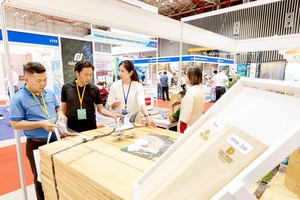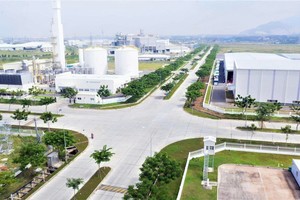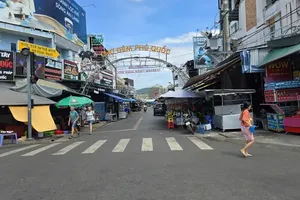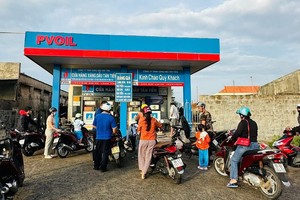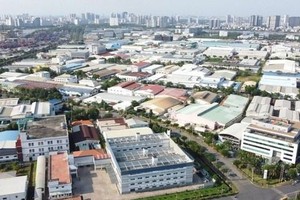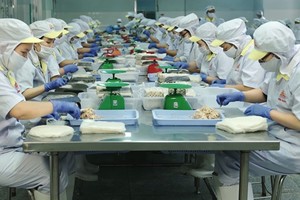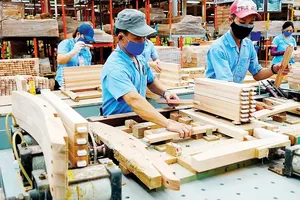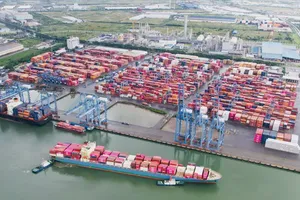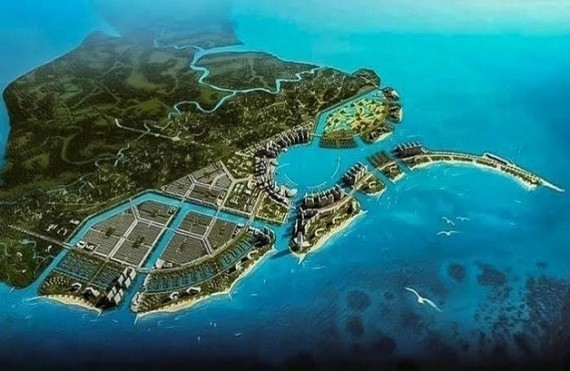
Although several projects for Can Gio District have been approved by the Government, some investment projects are still facing delay due to necessary readjustment in planning. In a discussion with Saigon Investment, Mr. Truong Tien Trien, Vice Chairman of the People’s Committee of Can Gio District, explained many facts related to this issue.
JOURNALIST: - Sir, it is known that for many years the plan of attracting investment for projects using land in Can Gio District has been stopped. What is the reason for this?
Mr. Truong Tien Trien: - The reason is that we have to wait for the readjustment of the master plan, although the general plan for Can Gio District was approved in 2012. In 2017, when working with the Can Gio district authorities, Mr. Nguyen Thanh Phong, Chairman of the People’s Committee of Ho Chi Minh City, asked the district to adjust the planning.
The People’s Committee of Ho Chi Minh City then immediately made two important moves. First, they directed the Department of Planning and Architecture to organize an international competition for planning ideas, with the aim of a long-term vision towards a modern and sustainable urban development area. Second, in order to minimize possible damage to investors, the city put a stop to the implementation of investment projects outside the state budget. Therefore, for many years in the district there has been no investment project by private investors, although all projects are in accordance with the 2012 plan.
All projects in Can Gio District must now wait for a new adjusted plan. The delay has been for objective reasons. The planning idea of the above-mentioned competition by the winner, namely, Nikken Sekkei of Japan, was approved by the leaders of Ho Chi Minh City. Based on that idea, the adjustment of planning work was carried out.
However, in the process of implementation the law changed, and the new law does not call for the adjustment of general planning but is under district planning. According to the new Planning Law, it is necessary to make the provincial planning first, and then the district planning. Hence it is necessary to complete the planning of Ho Chi Minh City before proceeding with the planning of Can Gio District.
While the city planning adjustment is still being discussed, there are necessary and important projects for the people such as garbage treatment and cemeteries planning which are being delayed and which are greatly affecting the environment. For example, when people die, they are buried in unauthorized burial land where families haphazardly choose a site.
Can Gio District has sent several documents to the Department of Planning and Architecture, which has further sent these documents to the People's Committee of Ho Chi Minh City for recommendation. However, so far there has been no response. It is known that the Department of Planning and Architecture is very supportive of the district in this work. But it is believed that the planning adjustment for Can Gio District will not be approved until the fourth quarter of 2023, and supposedly implemented in 2024.
- Sir, one of the projects of great interest to investors is the development of the Can Gio beach encroachment urban area. Can you tell us how the implementation of this project will take place?
- The project of the Can Gio beach encroachment urban area near the sea was approved in 2007, and the initial land area of 600 hectares was invested by Can Gio Urban Tourism JSC. In June 2020, the project was transferred to Vingroup, a new investor, and was allowed by the Prime Minister to adjust from 600 hectares to 2,870 hectares.
Under this directive, the investor was asked to comply with three prerequisites before being allowed to start the construction work. First, the 1/500 scale planning must be approved. Second, the investor must fulfill all financial obligations. Three, the project design must be approved. However, all three of these prerequisites have not yet been fulfilled by the investor.
Regarding the 1/500 planning which is being adjusted, the calculation of land use fees for this project also has many new requirements. Because the project does not completely use the available land on the mainland but is developed on the sea, therefore the investor must level and fill the sea area. The earlier investor had planned to build the project on an area of 600 hectares and so far, 15 hectares has been leveled and filled.
The project design has also been approved and necessary legal procedures for construction works have been completed. However, for several reasons, the earlier investor did not continue with the project and Ho Chi Minh City had to hand it to a new investor.
According to the master plan, out of the approved total area of 2,870 hectares, 800 hectares are covered by sea and lake water, and the remaining area of 2,000 hectares needs to be leveled and filled. Now it is to be seen where the material to fill these 2,000 hectares will come from. Previously, the investor had asked the city to survey the sand mines in the sea, but there are very many strict regulations concerning the exploitation of sand mines.
The investor studied an excavation plan on the approved land and in the 800-hectare area the investor wanted to excavate the amount of sandy soil to create deep creeks for boats to enter and exit. Instead of transporting the soil to another place it could be used to level and fill the surrounding area of 2,000 hectares. This plan has been approved by Ho Chi Minh City for the investor to carry out the experiment. For this purpose, the Department of Science and Technology has been assigned as the focal guide before the implementation of the experiment in accordance with the provisions of the law.
- Thank you very much.

